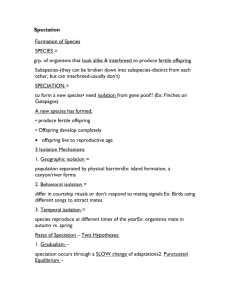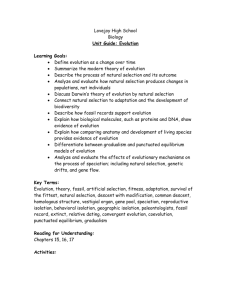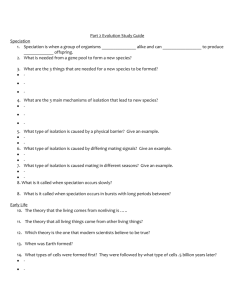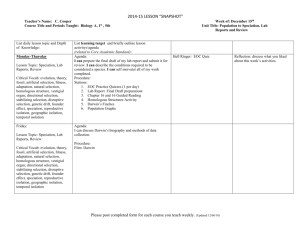Extinction Quiz
advertisement
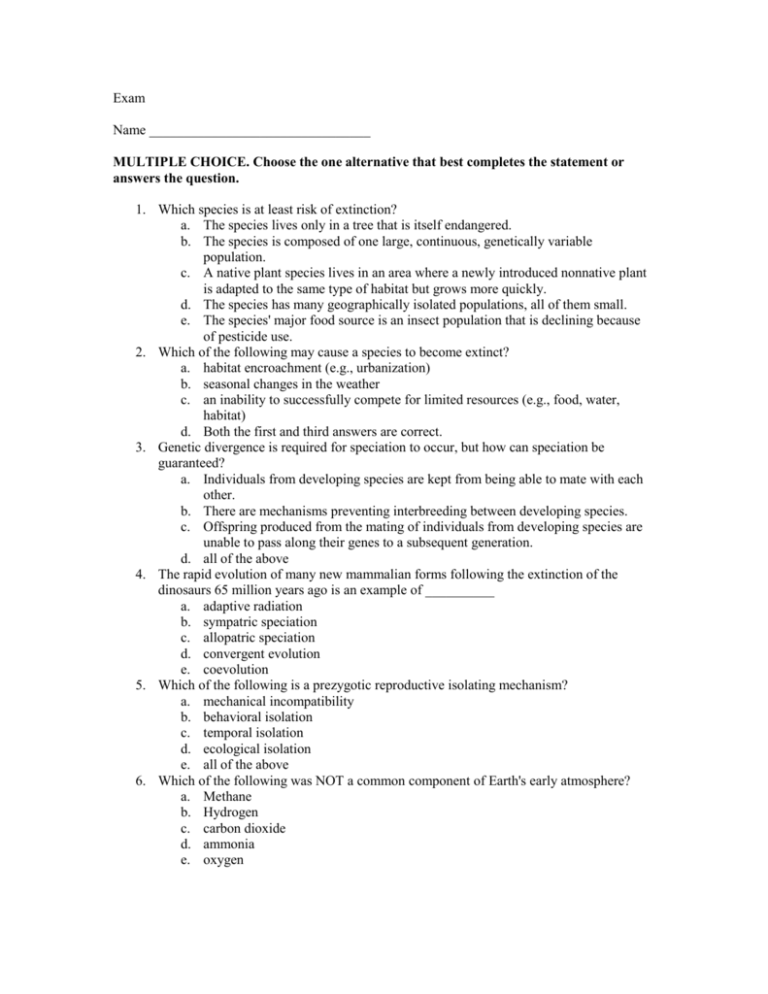
Exam Name ________________________________ MULTIPLE CHOICE. Choose the one alternative that best completes the statement or answers the question. 1. Which species is at least risk of extinction? a. The species lives only in a tree that is itself endangered. b. The species is composed of one large, continuous, genetically variable population. c. A native plant species lives in an area where a newly introduced nonnative plant is adapted to the same type of habitat but grows more quickly. d. The species has many geographically isolated populations, all of them small. e. The species' major food source is an insect population that is declining because of pesticide use. 2. Which of the following may cause a species to become extinct? a. habitat encroachment (e.g., urbanization) b. seasonal changes in the weather c. an inability to successfully compete for limited resources (e.g., food, water, habitat) d. Both the first and third answers are correct. 3. Genetic divergence is required for speciation to occur, but how can speciation be guaranteed? a. Individuals from developing species are kept from being able to mate with each other. b. There are mechanisms preventing interbreeding between developing species. c. Offspring produced from the mating of individuals from developing species are unable to pass along their genes to a subsequent generation. d. all of the above 4. The rapid evolution of many new mammalian forms following the extinction of the dinosaurs 65 million years ago is an example of __________ a. adaptive radiation b. sympatric speciation c. allopatric speciation d. convergent evolution e. coevolution 5. Which of the following is a prezygotic reproductive isolating mechanism? a. mechanical incompatibility b. behavioral isolation c. temporal isolation d. ecological isolation e. all of the above 6. Which of the following was NOT a common component of Earth's early atmosphere? a. Methane b. Hydrogen c. carbon dioxide d. ammonia e. oxygen 7. Which of the following would be an advantage of multicellularity? a. the potential for capturing and eating larger prey b. the ability to specialize different body parts for different purposes c. a better chance for escaping predation d. all of the above 8. What organic macromolecule do scientists believe was the first one able to generate more copies of itself during prebiotic conditions? a. Protein b. RNA c. DNA d. Carbohydrates 9. What experimental evidence suggests that eukaryotic cells formed symbiotic relationships with bacteria? a. There are similarities in both structure and function between the cilia and flagella of eukaryotes and the coiled/spiral form of bacteria. b. Both chloroplasts and mitochondria contain DNA that is distinct from that found in the nucleus of the eukaryotic cell. c. There are present-day examples in which a eukaryotic organism contains either a population of bacteria or a different form of algae. d. all of the above e. none of the above 10. The first structures that could enclose genetic material in a protective environment are called _____________________________. 11. If an organism lives in the absence of oxygen, it is called an _________________________ organism. 12. Some researchers suggest that the first eukaryotes were actually various different prokaryotes living in cooperation within the same cellular membrane. This belief is called the ________________________________________ theory. 13. RNA became a candidate for the first information-carrying molecule when two scientists discovered that some RNA molecules can act as enzymes that a. degrade proteins b. synthesize copies of themselves c. synthesize amino acids d. split water and release oxygen gas e. turn light into chemical energy 14. The earliest living organisms were a. Prokaryotes b. Eukaryotes c. Multicellular d. Aerobic e. Photosynthesizers 15. One example of the endosymbiotic theory is ________________________________________________________________________ ___________________________________________________________.

